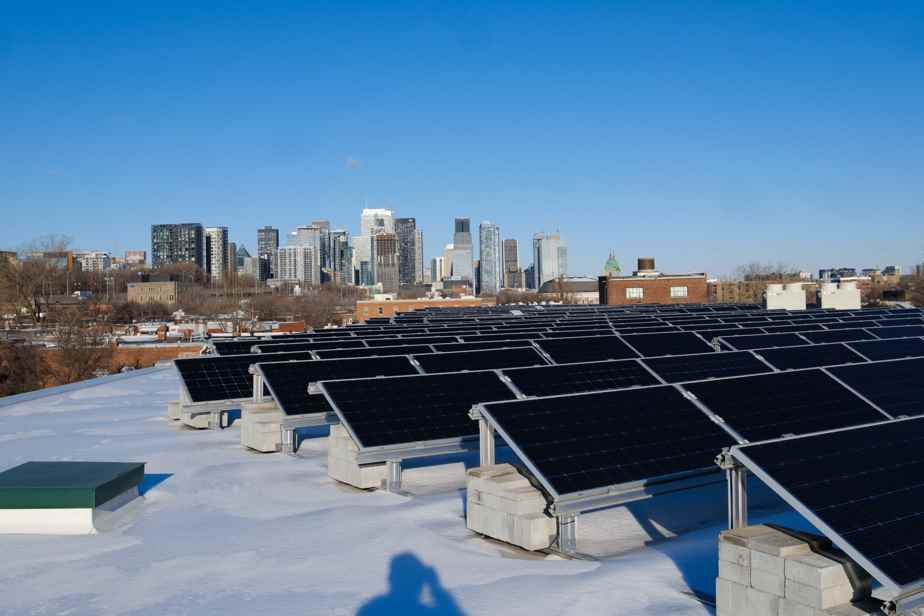While everywhere in the world, including elsewhere in Canada, solar energy is experiencing exponential growth, this form of energy remains the great forgotten part of the energy transition in Quebec. The results of Hydro-Québec’s most recent calls for tenders for the purchase of renewable energy will not change anything.
The state corporation, which wants to buy 480 megawatts of renewable energy of any kind on the market, has received proposals totaling four times that amount, or 2,101 megawatts. Out of 13 bids received, only one proposes solar energy. Its planned production is 32 megawatts.
The next 4,000 megawatt tender to be announced soon will not move the needle. It is in principle entirely reserved for wind power, even if the terms of this new call for tenders are not yet final.
The call for tenders “could be open to other forms of energy, but wind power is preferred,” said Hydro-Quebec spokesperson Maxence Huard-Lefebvre.
“It’s a production that we know well, which easily integrates into our network and which can be put into service quickly”, he summarizes.
If retained by Hydro-Quebec, the 32-megawatt solar park project submitted by the Stace Group would double the contribution of solar power to Quebec’s energy balance, which today essentially only has two solar power plants built. by Hydro-Québec as part of a pilot project with a total capacity of less than 10 megawatts.
Quebec is one of the provinces where the solar sector is the least developed in Canada. The relatively low price of electricity produced by hydropower plants, which meet 95% of Quebec’s needs, is certainly an explanation, believes Karim Belmokhtar, specialist in the renewable energy sector and co-author of a portrait of the industry. solar energy in Canada carried out by the Quebec research center Nergica. However, with the end of Hydro-Québec’s surpluses and the growing demand for electricity, the time has come to take a greater interest in this source of energy, he believes.

“The competitiveness gap is constantly narrowing and the cost of solar power is now almost equivalent to that of wind,” he points out.
It predicts that by 2030, the production cost of solar installations of more than 1 megawatt connected to the Quebec electricity grid will be around 5 cents per kilowatt hour, which is lower than the rates of Hydro-Quebec, which, for their part , will continue to increase.
time to act
The under-representation of solar energy in Quebec’s energy supply is deplorable, but not surprising, given the lack of incentives to accelerate its development, say companies working in the industry.
Quebec has an interesting solar potential, comparable to that of several countries where the solar sector is developing at high speed, such as Germany.

PHOTO HUGO-SÉBASTIEN AUBERT, THE PRESS
The roof of the Lemay firm’s head office
This potential is sufficient to meet a large part of the 25 terawatt hours of new needs established in Hydro-Québec’s strategic plan, according to Marco Deblois and Mike Perrault, partners of Rematek Énergie, a firm specializing in solar installations. Rematek notably built the solar roof for Maison Simons in Quebec City and that for the architectural firm Lemay in Montreal.
In the industry, many would like Hydro-Québec to launch a call for tenders reserved for solar energy, which would make it possible to identify the best projects and give the impetus necessary to launch the sector, as we have made with wind power.
But according to Marco Deblois and Mike Perrault, the development of solar power in Quebec does not go through a call for tenders from Hydro-Quebec. In this kind of appeal to the market, the forms of energy are put on the same footing, which puts solar energy at a disadvantage, explains Mike Perreault during an interview with The Press.
“Solar energy can be produced at the point of consumption and does not need to be transported over long distances like wind power, he illustrates. This avoids adding transmission capacity, which is expensive. A solar installation installs faster than wind turbines, he adds.
The key to solar development is simpler and above all it is there, before our eyes, according to him. It is the roofs of our homes, our businesses and our businesses that can become so many small solar power stations and produce electricity in a decentralized way.
“With only 3% of roofs available for the installation of solar panels, we can produce 10% of the new needs identified by Hydro-Québec,” he assures us.
A tax credit which would make it possible to obtain a faster return on the investment necessary for the installation of photovoltaic panels would be more effective than a dedicated call for tenders which, for its part, targets the construction of large solar parks which it must be connected to the Hydro-Quebec network.
With a financial incentive in the form of a tax credit, solar production would develop thanks to private investment by individuals and businesses, rather than with public investment, underlines Mike Perreault.
For lack of financial assistance, only the most convinced currently decide to install solar panels and decentralized solar production is very marginal in Quebec. Only 800 of Hydro-Québec’s 4 million customers have solar installations connected to its network.
